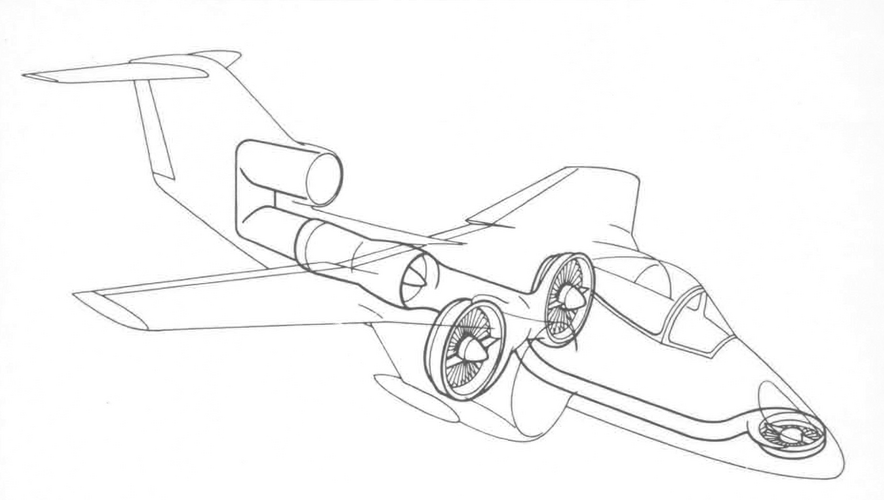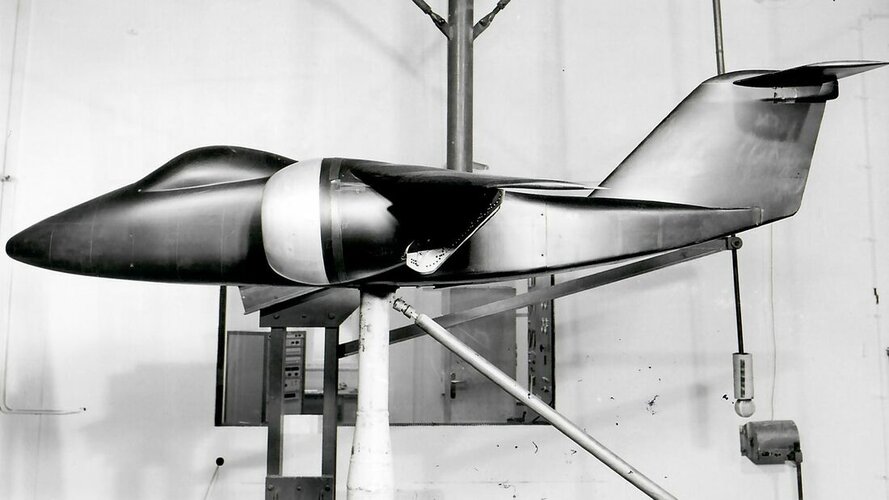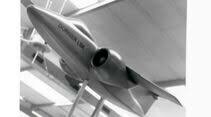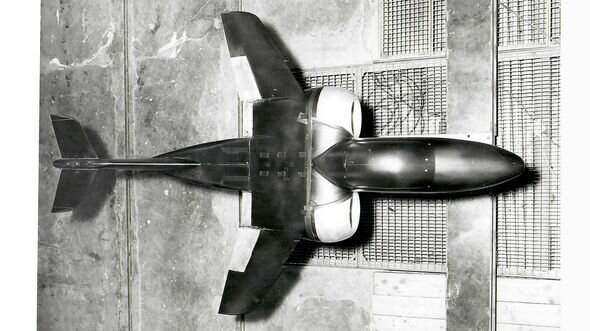Light V/stol fighter
Dornier is studying a "light, hoverable combat aircraft" as a substitute for armed helicopters under conditions of enemy air superiority. It is primarily a tank-killer project. The intake to the gas generator has a tortuous shape in this Dornier study of a lightweight V/Stol fighter. The type might be an alternative to the "tank-buster" armed helicopter. It uses tip-driven remote fans and is derived from work on the Aerodyne wingless reconnaissance vehicle Such a type would need to be cheap, small (G.91 size) and able to operate from dispersed sites, but be able to reach High subsonic speeds and to defend itself against enemy fighters.
Helicopter escort and attack would demand good lowspeed manoeuvrability, and there could be advantages in making missile attacks on tanks from the hover. Taking technology derived from the Aerodyne wingless reconnaissance vehicle a stage further, the fighter project would use twin tip-turbine-driven fans with cascade deflectors for Vtol performance. (Hawker Siddeley Dynamics and Dornier
are now jointly studying wingless reconnaissance vehicles.)
In principle a tip-turbine-driven fan for the fighter is available from General Electric. It is used as a horizontal fan in the wings of the Ryan XV-5A Vtol research aircraft. Dornier says such gas-driven fans, if mounted in suitable ducts, can produce pressure ratios of between 1-15:1 and 1-5:1, and can be used at up to near-sonic speeds. When integrated as closely as possible into the wing, such a propulsion system can induce, says Dornier, a jet-flap effect beneficial to high-speed combat manoeuvrability at low cascade deflection angles. Dormer says that the radius of action of the type depicted here would be 320 st miles, 200km with a 2,000Lb, 1,000kg-plus weapon load on a lo-lo, high-speed mission.
Shaft-driven fans have been investigated, but are not as advantageous except at lower fan pressure ratios (optimum would be 1.1:1), when hover endurance would be higher than for gas-driven units. Although the weight of the shaft engine is reduced with
decreasing pressure ratio, the weights of fans, gearboxes and airframe increase considerably, which results in a reduction of the useful load. With increasing fan pressure ratio, gas-generator power and fuel consumption increase as well. On the other hand, high-speed performance, manoeuvrability and radius of action are improved. The amount of useful load remains almost constant, since the increasing gas generator weight is offset by decreasing fan and airframe weights. The wing would be sized primarily on the basis of combat-manoeuvrability requirements.
















